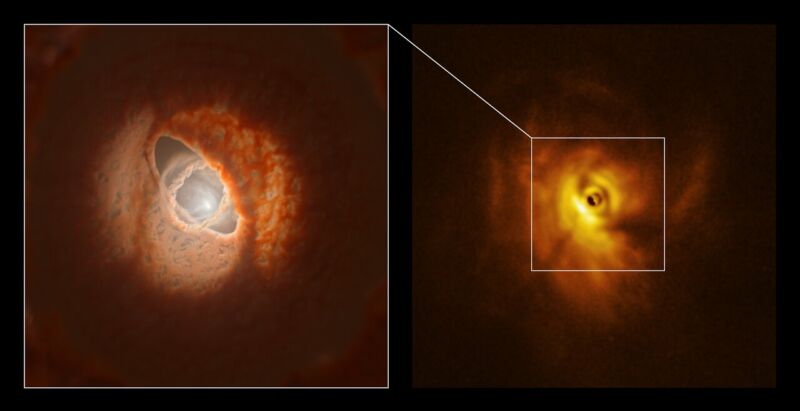Three stars, warped rings may show how planets end up moving backward

Enlarge / An image of the exosolar system (right), and an artists' conception of what we're looking at. (credit: ESO/L. Calcada, Exeter/Kraus et al.)
If all we knew about was our own Solar System-a condition that was largely true even two decades ago-we'd think that planets are all neat and tidy. All of the familiar ones orbit in a single plane aligned with the Sun's equator and move in the same direction. And that's exactly how they should behave, considering that planets form from a single disk of material rotating around the star.
But as we've gotten a clearer picture of the diversity of exosolar systems out there, we've seen some pretty odd things, like planets that orbit in the opposite direction than they should or planets with orbits that are nowhere near the plane of their system. While some of these idiosyncrasies can be explained by gravitational interactions in systems with multiple planets, there might be conditions where planets could form in bizarre orbits.
Now, researchers have imaged an exosolar system where that seems to be happening.
Read 12 remaining paragraphs | Comments